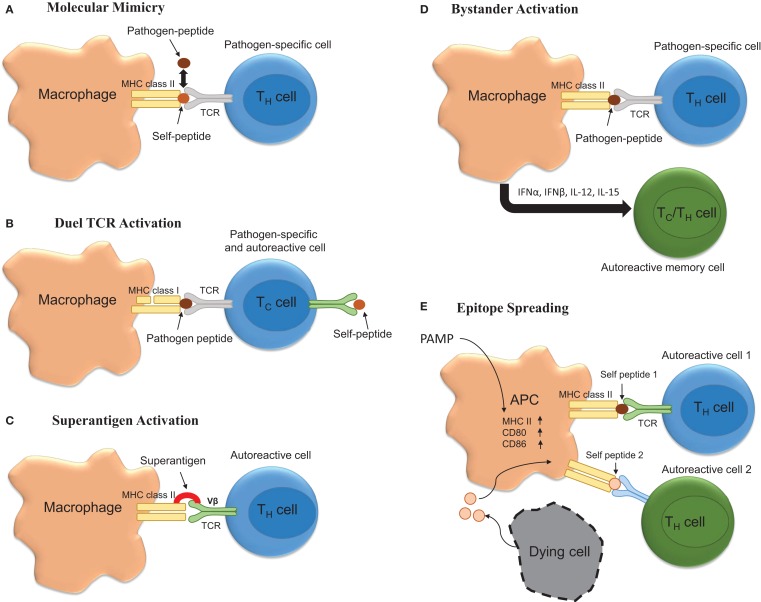Figure 1.
Potential mechanisms underlying infection induced T-cell activation. (A) Molecular mimicry occurs when there are sufficient overlapping structural similarities between a pathogen-specific peptide and self-peptide such that it triggers T-cell activation. (B) Autoimmunity can be triggered by T-cells possessing both pathogen-specific and autoreactive T-cell receptors (TCR). (C) Bacterial superantigens can crosslink MHC class II and TCR leading to autoreactive T-cell activation and autoimmune disease onset and/or exacerbation. (D) Bystander activation of T-cells by infection could promote exacerbation. Here, infection promotes APC activation leading to the activation of CD44hi polyclonal T-cells via cytokine production. (E) Infection via activation of APCs could drive the process of epitope spreading wherein on constitutively released self-peptides resulting from chronic inflammation are presented to polyclonal autoreactive T-cells.

